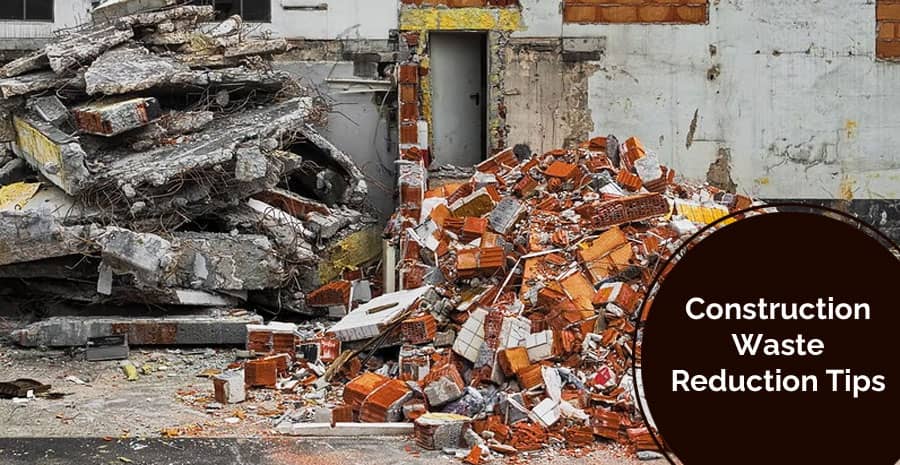Construction Waste Reduction Tips

The construction industry as a whole act as a cause of a lot of waste. When buildings or other structures are being built, broken down or renovated, there is a lot of demolition and construction debris, almost 548 million tons.
Construction is a growing industry, so waste handling on construction sites must be handled with greater care and consideration- starting as early as acquisition and planning.
Merits of Reducing Waste Disposal
For the environment,
- Less waste on the land.
- Less utilization of natural resources.
- Less CO2 emission due to using, producing and transporting waste.
- Less risk of harmful accidents caused by pollution.
For the construction companies,
- Cost-cutting by effectively using all the materials,
- Less wastage of resources and more business opportunities as "green" buildings will evolve your company and allow you to stand out from your competitors; clients will prefer your work more than others.
- Lesser waste disposal leads to increased efficiency amongst workers.
Tips to Reduce Construction Waste on Site
Managing construction waste sustainably is a recommended standard and will save you money and time in the long run.
1. Organizing and Planning your site to reduce construction waste
Making your construction site more organized is a simple yet effective method of cutting down the waste disposal. The organization could be as simple as grouping salvageable and recyclable materials together.
Some steps for proper organization are:
- Make precise measurements to ensure you have the proper amount of each material. Order only what is absolutely required.
- Check your inventory frequently to ensure you know what you have and what you require. Don't go out and buy more than you need.
- In the planning stage, consider the possibility of construction site waste. On-site recycling and reuse bins are a must.
- Before starting the work, look for things that can be reused or repurposed. Ensure that all employees understand how to sort waste as it is generated.
2. Recycle wastes that can not be reused
If waste is sorted and managed according to recyclability, you will have pepper understanding of which items can be used and which cannot be.
Recycling waste can reduce the number of items that will be needed to be thrown in a dumpster and, more crucially, reduce wastage.
Some items that can be recycled if there is excess wastage left are :
Metal, Paper, Gravel, Cardboard, Plastic, Metal, Carpeting, Unused Wood, Asphalt, Concrete, Window glass, Metal and Asbestos.
3. Choosing Vendors Wisely
There is a need to have a proper vendor who will help you to manage waste properly. An ideal vendor is one that can scale its operations to support your project.
Choosing the right vendor construction waste management partner can reduce the amount of time and effort you spend sorting different materials.
With some vendors, you can take advantage of premium single-stream recycling packages, which can help you reach sustainability goals sooner.
4. Monitor Every Progress for Construction Waste Management
Tracking is an important part of any waste management strategy. Keep track of your progress to see how much waste you're producing and how much of it ends up in landfills.
Using this information, you can make quick adjustments and compute landfill diversion and recycling rates.
This is where your vendor will be of great assistance. Regardless of the stage of the project, you do not ignore the task of keeping track of modifications. You'll need to make some changes to your upcoming projects most of the time.
Conclusion
Modern construction requires the use of sustainable building practices. These practices will not only assist you in complying with local rules, but they will also save you money and time. The aforementioned waste-reduction suggestions will assist you in doing so. Remember that the less rubbish you have to dispose of, the less money you'll have to invest in the management of waste.
To learn more, watch the following video tutorial.
Video Source: Landfill-Site.Com
